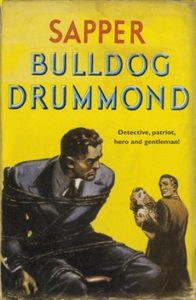January 2012:
Three years ago this week I visited the east coast of the US as part of my holiday so I could attend President Obama’s Inauguration.
On the way from New York to DC I detoured via Antietam and then, on the Sunday before Inauguration on the Tuesday, to Gettysburg.
I’ve often thought of this place since then. The brutality of the Civil War, the biography read of Joshua L Chamberlain. Gettysburg signifies so much more to America, and those of us fascinated by its history, than a battle. Custer fought here – and later died many, many miles west in battle. Pickett lost his division, the Union Army won a major battle. The town still bears many of the scars. Small town USA meets battlefield. The contrast between the lady on the Monday as I struggled with snow on my hire car to the fighting that took place in and around this town has not left me.
Some people have a ‘bucket list’. I do not have per se. There are places I want to see; will see; must see.
Gettysburg was one such place.
Original post:
It’s an eery place. Such a big place, and yet, so incredibly quiet. So laden with the sounds past, just there, time almost having stood still. If there was one place in the eastern United States I was going to visit – it was this place.
Gettysburg.
It was here, on a January Sunday that I arrived, ready to see where this important battle of the Civil War took place. Having driven that morning from Sharpsburg, this was going to be one of the highlights of my trip that had seen me in New York, and then later, heading into DC. But this place, this place that I had read so very much about, had seen the movie on – I knew this place – and here I was.
Gettsysburg.
The battle lasted three days. Fought between 1 – 3 July 1863, it was the Civil War’s bloodiest battle; though more men were casualties at Antietam, which was a shorter battle. Over three days around 50,000 men were killed, wounded or were missing at Gettysburg.
I’ve been captivated with the tragedy and importance of Gettysburg since I began reading about the Civil War and soon realised the importance of the battle for both armies; for the political situation; and most of all for the courage it took for those men taking part. Pickett’s Charge, so vividly filmed and portrayed in the movie was an incredible piece of courage – a frontal assault of an enemy, many of whom who were protected by a low stone fence. Standing there with my guide, from where Pickett’s men came out from the trees and began to march in open fields towards the Union army was only to be matched some hours when I stood, and then knelt behind that small fence which many of the Union men sheltered. The distance is but a kilometre or two, and seeing the two perspectives and standing silently, imagining what had occurred here, knowing the historical outcome was humbling beyond words. Here they had been.
If Antietam was carnage, then Gettysburg was a rolling, drawn-out brawl. You can walk the major features of Antietam; at Gettsyburg because of the sheer size of the battlefield, you must drive around it.
Antietam was grey. Stark. It was easy to picture Lee on the plateau trying to control the battle. The Sunken Lane is what I imagine Lone Pine to be like – incredibly quiet and geographically confined. Gettsyburg isn’t – and that’s because the battle lasted three days and the Union forces were forced from their initial positions on the first day to the low ridge that they eventually occupied – Cemetery Ridge.
A feature of the battlefield which I hadn’t expected but which make it even more intense (if that’s at all possible) are the memorials, erected by a number of states whose troops fought at the battle. They’re scattered around, silent reminders of not only the men who fought there; but the impact on which the Civil War had on so many communities.
Devil’s Den, the Wheatfield, Culp’s Hill – they are places on the battlefield which strike, I would think, a similar feeling to Lone Pine, The Nek and ANZAC Cove to Australians who are familiar with the Gallipoli battlefield. But of all them, there was one that I needed to see, to stand and listen and feel: Little Round Top.
Little Round Top was a feature on the extreme left flank of the Union Army which was assaulted by the Southern forces on the second day of the battle. This part of the battle is portrayed in the movie Gettsyburg and my guide and I spent some time here, with snow gently falling, standing, walking this small part of the battlefield, tree-lined and underbrush. This is where the 20th Maine fought and held the line. It earned its commander, Joshua Lawrence Chamberlain a Medal of Honor. This man, a teacher (which given my parents’ – and now wife’s – profession) resonates, went on to be Governor of Maine. The 20th Maine’s charge down the hillside is highlighted in the movie. It was and remains an incredible and moving experience to have walked that hillside; to have crouched behind the rocky walls from where these men roared down, bayonets fixed. Surreal does not come close.
There are fewer places I have been to that are so utterly quiet that the silence is almost, somehow, deafening.
Standing where Chamberlain and his men did was …. well…. how DO you do that moment justice? It was an experience and realisation of no matter how much you’ve read and know the area and what had happened, nothing could ever, ever come close to be imagining what it was really like.
Here they stood.
The guided tour took a half-day. I left, thanking my guide for showing me, in some small way, what had happened here. Books do not do this place justice, and while the movie is very good, there is nothing that compared to standing there – knowing what happened, trying to get a sense of what it would have been like.
Later that night I went to a pub and listened to the locals, in this little town in southern Pennsylvania, trying to comprehend what I had experienced during the day. It’s hard to grapple with.
Perhaps that’s the point – it’s too big, too moving, too intense to ever fully comprehend. But I consider myself extraordinarily fortunate to have been to Gettysburg and to have seen, and stood, and listened.





